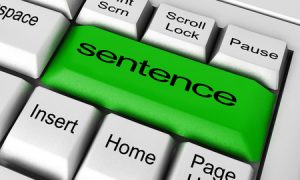
The front fork of a Birdy folding bicycle has a distinctive structure that smooths out bumps in the road and solves the bicycle’s main problem, how to fold quickly into a compact space.
This post explains how you can structure the case for support in a research grant application in a way that solves its main problem and enables it to do its tasks efficiently.
A case for support has two main tasks. It has to convince the committee that your research project is important. And it has to convince referees that your project will be successful. However, these tasks are not the case for support’s main problem.
The case for support also has to do several minor tasks. It has to make the grants committee think that they understand your project. It has to convince referees that you are competent to carry out the project. And it has to convince them that the resources you will buy with the grant are necessary and sufficient to carry out the project. These tasks are not the case for support’s main problem either.
The case for support’s main problem is this: most members of the grants committee will not read it, and those who do read it will probably not understand it. Despite this, the case for support has to convince them that your research project is important. It has to convince them that your project will be successful. And it has to tell them what your project aims to achieve, and how the project will achieve it and how competent you are.
The committee members will not read the case for support but it still has to convince them that your project is important and will be successful. That is its main problem.
My recommended structure for the case for support solves this problem. All the committee will skim the case for support while your grant application is being discussed, but they will all have read the summary beforehand. So if you give the case for support a structure that gives the right information to someone who skims it, and if you create a perfectly matched summary that ‘primes’ them by giving them the same information in the same words, that solves the problem.
So what kind of structure allows someone who only skims the case for support to pick up all the right information?
A three-layered structure.
As I said, the case for support has two main tasks. First it has to convince the reader that your project is important. Then it has to convince them it will be successful. The ideal structure has three layers, a main structure, a local structure and a fine structure.
Main Structure: Introduction, Background and Methodology.
The most efficient way to convince the reader your project is important and will be successful is to divide the case for support into three main sections.
- Two of the sections do the main tasks:
- the background section convinces readers that the intended outcomes of the project are important, and
- the methodology section describes the project and convinces the reader that it will achieve its intended outcomes.
- The third section, the introduction, increases the effectiveness of the background and methodology sections by telling the reader the points that will be made in those sections. You write the introduction last but the reader reads it first.
The names that I have given to the three main sections are not fixed. They will vary, depending on the funders’ instructions for the case for support. Whatever those instructions, it is always possible to write the case for support so that it has a background section that describes the state of the art in such a way that it is completely clear that the intended outcomes of your project will be important to the funder, a methodology section that makes it clear that your project will succeed in delivering its intended outcomes, and an introduction. The local structure of these sections, which we discuss next, gives the reader the bigger picture of what makes your project important.
Local Structure: three aims in background delivered by three objectives in methodology.
A good way to help the reader to assess the value of your project is to describe it as consisting of three components, each of which will deliver a clear outcome. If it suits you, or if the funder asks you to state aims and objectives, you can call these three outcomes the aims, and the sub-projects that will deliver them, the objectives.
Breaking the overall research outcome into components like this makes it much easier for the committee to discuss it and analyse it, and it also makes it much easier for you to write the background in a way that makes it clear that your project is really important. If the background convinces the reader that the aims are really important then the project will automatically become important if your description of it convinces them that it will achieve the aims.
Three aims and three objectives is the perfect number. If you have too few aims or objectives it becomes hard to describe them concisely. If you have too many, it becomes hard to remember them. And if you have different numbers of aims and objectives then the aims and objectives will not give the reader a clear picture of what the project will achieve and why it is important.
Because each objective delivers exactly one aim it is easy to write the background so that it convinces the reader that each aim is really important. It also makes it easy for the reader to remember the list of aims and to see that by carrying out the objectives you will achieve the aims.
The background and methodology sections have five subsections each. Three of each set of five are used to link the two sections together, so that the background convinces the reader that every component of the project is important. The remaining subsections have different jobs, enticing the reader to read the case for support, explaining the overall importance of the project, introducing the project and describing what will happen after the project is done.
The three pairs of subsections that link the background to the methodology section work very simply.
- The background has three subsections, each of which explains the importance of one of the aims. Usually this is where literature is cited to support the case that the project will achieve important aims.
- Each of the subsections in the background is paired with one in the methodology section, which describes the sub-project (the part of the project) that delivers the corresponding aim.
The background starts with two subsections that entice the reader to read the case for support, and explain the overall importance of the project.
- The first subsection states the overall project outcome and explains it. If not much explanation is needed, this subsection can be expanded into an introduction for the whole project (see below). For that reason I would always write this subsection last.
- The second subsection gives the evidence that the project outcome is important. These two subsections are essential preparation for the core subsections that explain how important the aims are. The aims are usually important mainly because they deliver the overall project outcome.
The methodology section starts with a subsection that introduces the project. It also leads into the three subsections that describe the objectives. The methodology section finishes with a fifth subsection that describes what will happen after the project is done. This could be be dissemination, impact, or even a new project.
Fine Structure: Key sentence followed by justification.
Each of the ten subsections described above has the same structure. It begins with a single sentence that summarises the subsection. These are the ‘key sentences’ that are the skeleton of the case for support. The rest of the subsection fleshes out the key sentence, supporting it and increasing its impact. For key sentences in the background, the ‘flesh’ will consist mainly of evidence from the literature. For key sentences in the methodology section the ‘flesh’ consists mainly of details about what will be done in the project.
Within each of these sections, the punch-line of each paragraph is on the first line, and the remainder of the paragraph explains or justifies the punchline. This post explains the advantages of this assert-justify structure. The most important advantage is that if you leave space between your paragraphs, someone who skims your text will read the first line of every paragraph.
You can read more about the key sentences in these three blog posts.
The Introduction
The first draft of the introduction can be done by copying and pasting the key sentences. You may find it necessary to add some linking and signposting, so that they form a coherent narrative. When you write the main sections of the case for support you will edit the key sentences so that they link smoothly with the sections they introduce, so it will be better to leave the introduction until after you have written the background and methodology sections. This post describes the introduction.
The perfectly matched summary
The summary should be perfectly matched to the case for support. This will cause anyone who reads the summary and then skims the case for support (most of the committee) to feel that they understand the case for support completely. If you use the key sentences as a skeleton for the case for support in the way that I recommend, they will make a perfectly matched summary. This post discusses the summary.
I hope this post convinces you that my recommended structure equips the case for support to solve its main problem. In a future post I will discuss my recipe for producing a case for support that has this structure.










